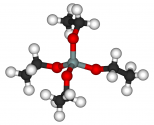Doubtful. Given the predicted expansion in the US and Taiwan for 5nm and 3nm for TSMC why would they build more fabs in Germany?
TSMC might make a token fab that would manufacture chips at older process nodes just to placate the EU but this would be counter productive as it would both harm existing EU manufacturer STMicro and would likely duplicate the same processes GlobalFoundries can manufacture already. Let's face it, it would be tens of billions for an EUV fab. A non EUV fab would be cheaper. But GlobalFoundries Dresden can already manufacture at 22nm both SOI and bulk. Plus GlobalFoundries already has 14/12nm FinFET process in their US fab. It would be a lot cheaper to just reconvert that fab to 14/12nm. STMicro is still stuck at 28nm and they use FD-SOI. It is mostly for specialized applications like radio. FD-SOI is also used for rad hard applications like military or space applications.
TSMC might make a token fab that would manufacture chips at older process nodes just to placate the EU but this would be counter productive as it would both harm existing EU manufacturer STMicro and would likely duplicate the same processes GlobalFoundries can manufacture already. Let's face it, it would be tens of billions for an EUV fab. A non EUV fab would be cheaper. But GlobalFoundries Dresden can already manufacture at 22nm both SOI and bulk. Plus GlobalFoundries already has 14/12nm FinFET process in their US fab. It would be a lot cheaper to just reconvert that fab to 14/12nm. STMicro is still stuck at 28nm and they use FD-SOI. It is mostly for specialized applications like radio. FD-SOI is also used for rad hard applications like military or space applications.
Last edited:

